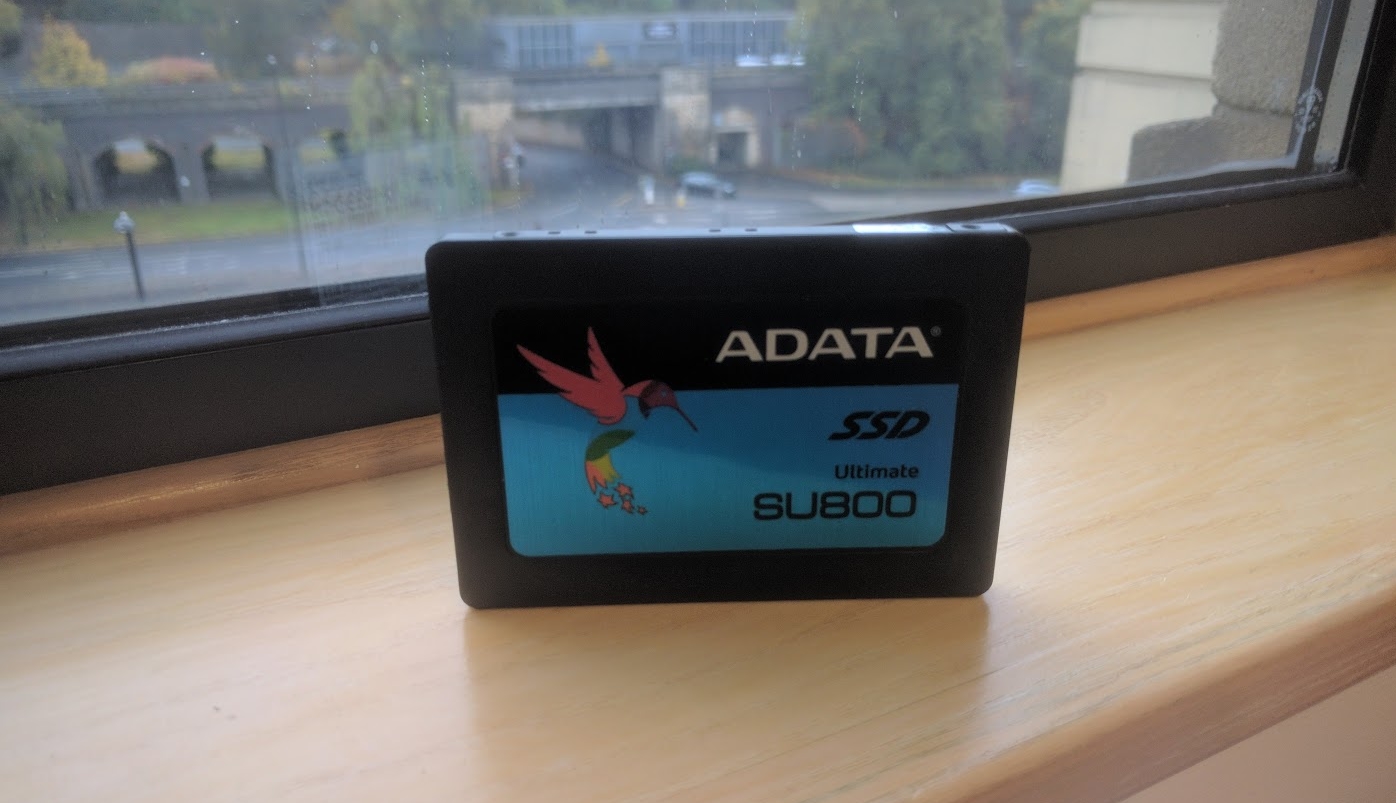TechRadar Verdict
The Adata SSD Ultimate SU800 is a competent budget hard drive that gives you the benefits of solid state storage without breaking the bank.
Pros
- +
Fast
- +
Cheap
- +
Reliable
Cons
- -
Not terribly exciting
- -
There are faster SSDs out there
Why you can trust TechRadar
3D as a buzzword has taken a bit of a knock recently in the home entertainment sector, but it crops up in the marketing material of a product you might not expect – a solid state hard drive.
Adata is making a big deal of 3D NAND flash, which it claims allows it to cram in more storage capacity, higher efficiency and faster read and write speeds. It also claims that 3D NAND flash makes its drives more energy efficient, and therefore cheaper to run.
So does its 3D NAND flash make the Adata SSD Ultimate SU800 stand out from the crowd? Or is it just marketing bluster? Read on to find out.
Features and specification
Although we tested the 256GB capacity Adata SSD Ultimate SU800, the drive comes in a range of capacities between 128GB to an impressive 1TB, which means if you’re set on the drive, you have the choice of what capacity you want depending on what you need it for. So if you’re looking for an SSD to serve as a boot drive, then a lower capacity model would be for you, and if you wanted to combine speed and file storage in one 2.5-inch drive, the larger capacities would suit your needs.
Adata is very confident of the read/write speeds of the SU800, boasting maximum read speeds of 560MB/s and write speeds of 520MB/s. To put this in perspective, a traditional HDD averages 110MB/s read and write, so you’re looking at theoretical speed increases of up to 500%.
While in use, the Adata SSD Ultimate SU800 averages a power draw of 0.65w, a drop from traditional 2.5-inch HDD’s and their average 3.2w. The power draw when idle is just 12mW, which makes the Adata SSD Ultimate SU800 a good choice if you want your device to keep a low energy consumption overall. As the Adata SSD Ultimate SU800 is a 2.5-inch drive, it’s suitable for laptops, where lower power consumption equals longer battery life, so we’re pleased to see the attention to lowering power consumption that Adata has lavished on the SSD Ultimate SU800.
The Adata SSD Ultimate SU800 also comes with free downloads of Adata’s own SSD Toolbox program, as well as a migration utility to help you swap over from your previous drive. The software itself does the job well, even if the user interface isn’t the most refined we’ve seen.

Performance
So how does the Adata SSD Ultimate SU800 perform? Remarkably well, in fact, when put through the paces of our various benchmarks. In the Crystal Disk Mark benchmark it scored speeds of 562.6MB/s sequential read, and 507.6MB/s write, which is not too far off the speeds Adata promises. In the ATTO disk benchmark, which tests how fast a disk reads and writes data in various sizes, the Adata SSD Ultimate SU800 scored 562MB/s read and 515MB/s write.
These scores are largely in line with what most modern SATA III SSDs can achieve, so while 3D NAND doesn’t bring any major speed increases, it does mean that the Adata SSD Ultimate SU800 can easily hold its own against more expensive SSDs from established names.
In our PCMark 8 benchmark, the Adata SSD Ultimate SU800 scored 4960, which is almost identical to the more expensive Kingston SSDNow KC400’s score, again proving that while Adata isn’t as recognisable a name as Kingston, it can go toe-to-toe when it comes to performance.

Matt is TechRadar's Managing Editor for Core Tech, looking after computing and mobile technology. Having written for a number of publications such as PC Plus, PC Format, T3 and Linux Format, there's no aspect of technology that Matt isn't passionate about, especially computing and PC gaming. He’s personally reviewed and used most of the laptops in our best laptops guide - and since joining TechRadar in 2014, he's reviewed over 250 laptops and computing accessories personally.
